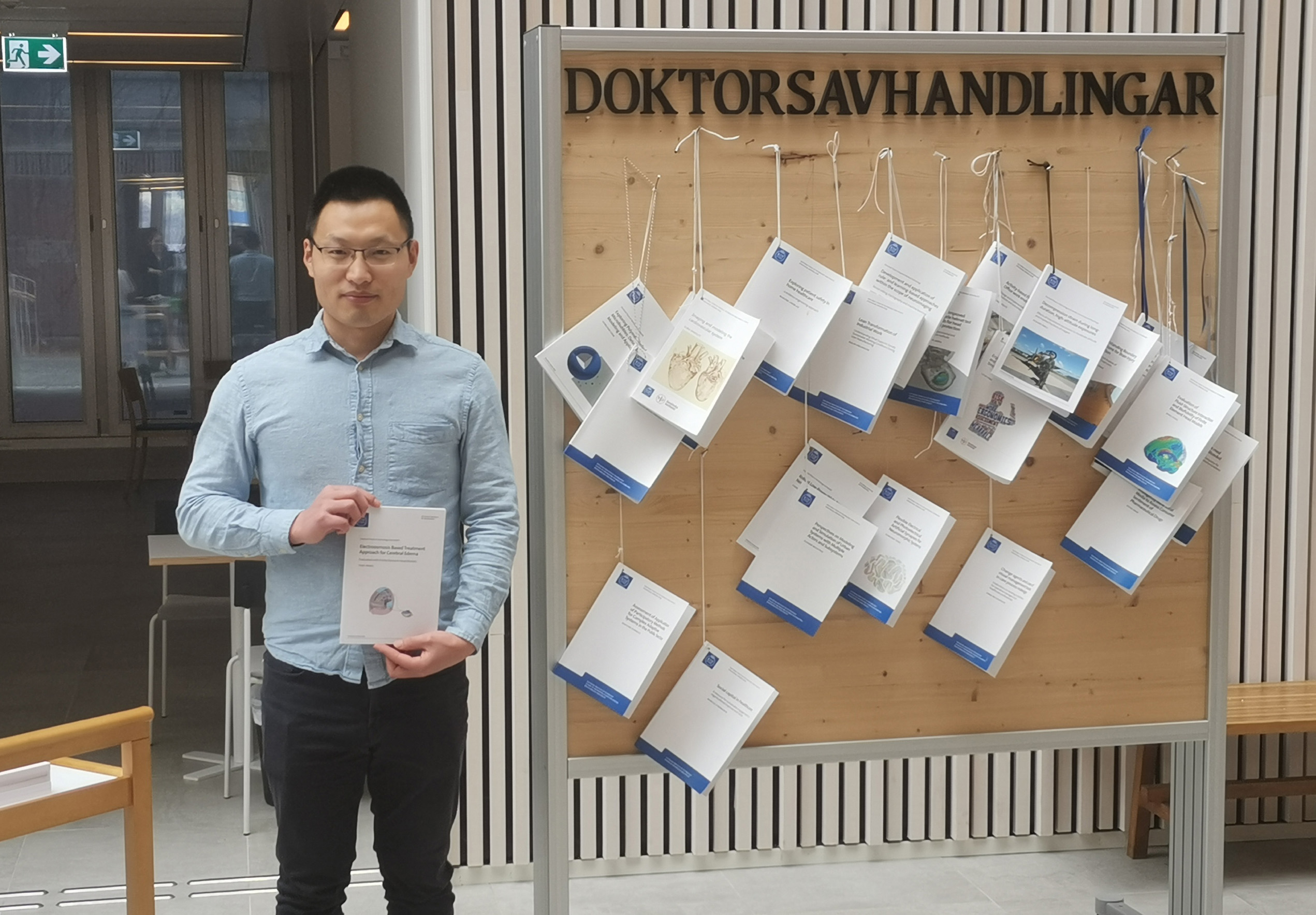Teng Wang, Division of neuronic engineering
Electroosmosis based treatment approach for cerebral edema

Teng Wang defended his dissertation "Electroosmosis based treatment approach for cerebral edema" on September 20th 2021. His research has already been noticed and he has made it to the covers of two journals in September, Acta Neurochirurgica and IEEE Transactions on Biomedical Engineering.
"Cerebral edema is a condition that causes fluid accumulation in the brain. The fluid increases the pressure inside of the skull, which can restrict the supply of blood to the brain. Blood carries oxygen to the brain, and the brain requires oxygen to function. A lack of oxygen can damage brain cells or even cause them to die. Thus, brain edema is a life-threatening condition that can be caused by for example a stroke, a brain tumour or traumatic brain injury." Teng Wang explains.
What did you discover?
"So far, there hasn’t been any effective treatment for brain edema but we have developed a novel edema treatment approach to drive the fluid out of the brain parenchyma – what we call the functional part of the brain. This is done by applying an external direct current utilizing the brain’s electroosmotic property. The approach is used to allow alleviating brain edema within a critical time window by a direct current, in which the excess fluid is driven from the edema region to subarachnoid space (a part of the brain where fluid can be absorbed) along the direction of electric current flow, from anode to cathode."
Teng Wang took his master's degree at Shandong University in China. His master's project worked to improve the biocompatibility of biomedical materials, including the implants used for the patients undergoing decompressive craniectomy, where part of the skull is removed to allow the brain to swell. His supervisor at Shandong University shared the position with him and recommended him to Xiaogai Li, associate Professor at KTH.
"In this project, we have investigated the treatment efficiency for three typical types of cerebral edema and the application of the proposed approach in different age groups. We have then found that the excess fluid can be driven out of edema regions with an appreciable flow rate by designing personalized electrode configurations. This approach can be developed as a new treatment on it’s own or as a complement to existing conventional treatments of edema."
Will you continue in the research world?
"Yes I will continue with post-doctoral work here at KTH. We believe that our proposed approach has important clinical implications for patients with cerebral edema and we have just taken a step to theoretically verifying the feasibility of this method. The next step is animal experiments."
